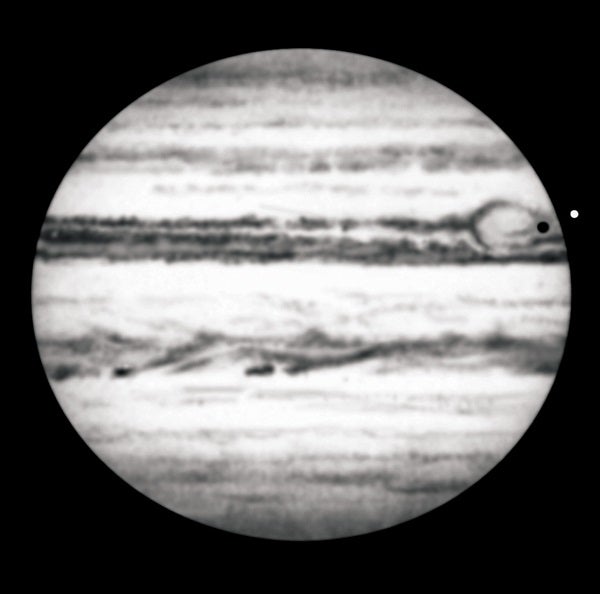Without warning, a mystery object struck Jupiter on July 19, 2009, leaving a dark bruise the size of the Pacific Ocean. The spot first caught the eye of an amateur astronomer in Australia, and soon observatories around the world, including NASA’s Hubble Space Telescope, were zeroing in on the unexpected blemish.
Astronomers had witnessed this kind of cosmic event before. Similar scars had been left behind during the course of a week in July 1994 when more than 20 pieces of Comet P/Shoemaker-Levy 9 (SL9) plunged into Jupiter’s atmosphere. The 2009 impact occurred during the same week, 15 years later.
Astronomers who compared Hubble images of both collisions say the culprit may have been an asteroid about 1,600 feet (500 meters) wide. The images, therefore, may show for the first time the immediate aftermath of an asteroid, rather than a comet, striking another planet.
The Jupiter bombardments reveal that the solar system is a rambunctious place where unpredictable events may occur more frequently than first thought. Jupiter impacts were expected to occur every few hundred to few thousand years. Although there are surveys to catalog asteroids, many small bodies may still go unnoticed and show up anytime to wreak havoc.
“This solitary event caught us by surprise, and we can only see the aftermath of the impact, but fortunately we do have the 1994 Hubble observations that captured the full range of impact phenomena, including the nature of the objects from pre-impact observations,” said Heidi Hammel of the Space Science Institute (STScI) in Boulder, Colorado.
In 2009, Hammel’s team snapped images of the debris field with Hubble’s recently installed Wide Field Camera 3 and newly repaired Advanced Camera for Surveys.
The analysis revealed key differences between the two collisions, providing clues to the 2009 event. Astronomers saw a distinct halo around the 1994 impact sites in Hubble ultraviolet (UV) images, evidence of fine dust arising from a comet-fragment strike. The UV images also showed a strong contrast between impact-generated debris and Jupiter’s clouds.
Hubble ultraviolet images of the 2009 impact showed no halo and also revealed that the site’s contrast faded rapidly. Both clues suggest a lack of lightweight particles, providing circumstantial evidence for an impact by a solid asteroid rather than a dusty comet.
The elongated shape of the recent impact site also differs from the 1994 strike, indicating that the 2009 object descended from a shallower angle than the SL9 fragments. The 2009 body also came from a different direction than the SL9 pieces.
Team member Agustin Sanchez-Lavega of the University of the Basque Country in Bilbao, Spain, and colleagues performed an analysis of possible orbits that the 2009 impacting body could have taken to collide with Jupiter. Their work indicates that the object probably came from the Hilda family of bodies, a secondary asteroid belt consisting of more than 1,100 asteroids orbiting near Jupiter.
The 2009 strike was equal to a few thousand standard nuclear bombs exploding, comparable to the blasts from the medium-sized fragments of SL9. The largest of those fragments created explosions that were many times more powerful than the world’s entire nuclear arsenal blowing up at once.
The recent impact underscores the important work performed by amateur astronomers. “This event beautifully illustrates how amateur and professional astronomers can work together,” said Hammel.
Occasional dark spots have appeared on Jupiter throughout the history of skywatching. Observing records of the planet are filled with references to spots, including “white spots,” “peculiar spots,” and “well-defined spots.” Only a handful may have described possible Jupiter strikes.
In 1686, the Italian astronomer Giovanni Cassini reported a dark spot on Jupiter that was roughly the size of the largest SL9 impact. Nearly 150 years later, in 1834, British astronomer George Airy independently reported a dark feature in Jupiter’s southern belts that looked nearly four times as large as shadows cast on the planet by the Galilean moons. Crude telescopes prevented skywatchers from probing the nature of those spots.
And just as scientists are learning more about the 2009 impact, another occurred June 3, 2010.










